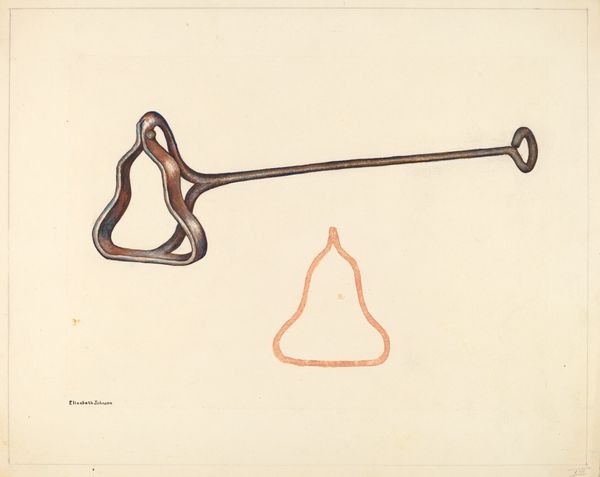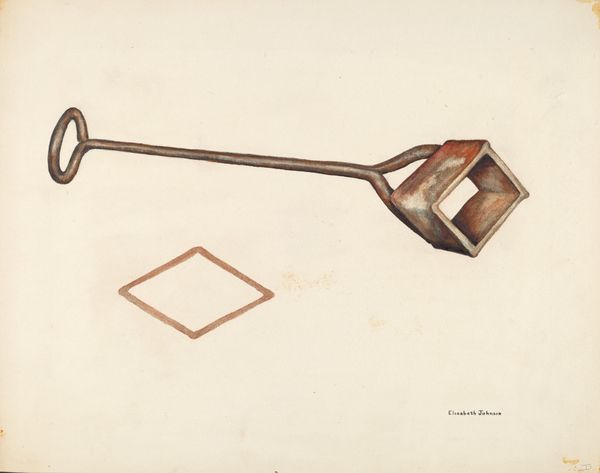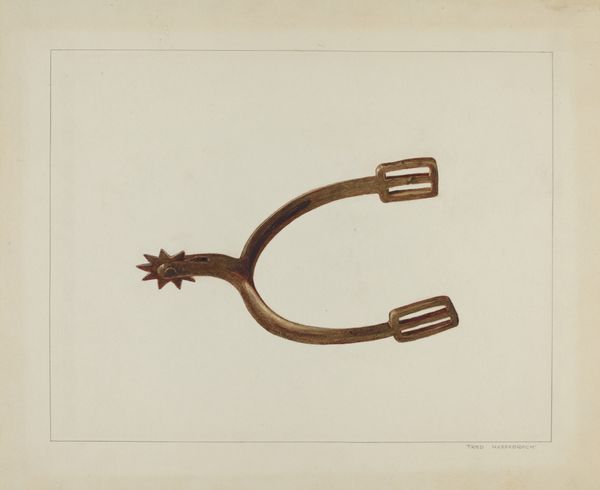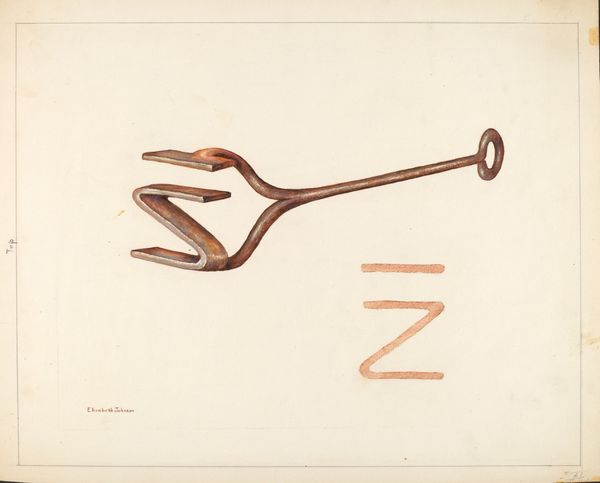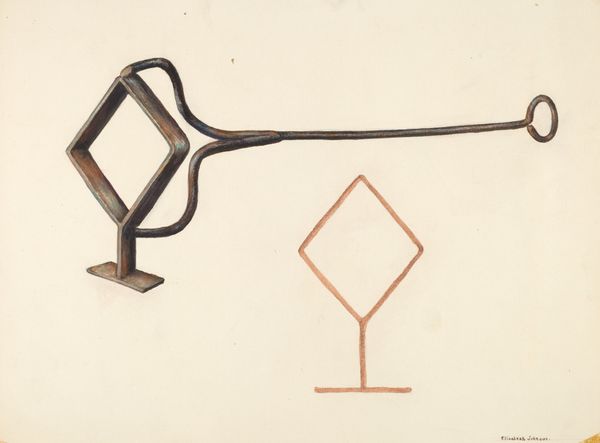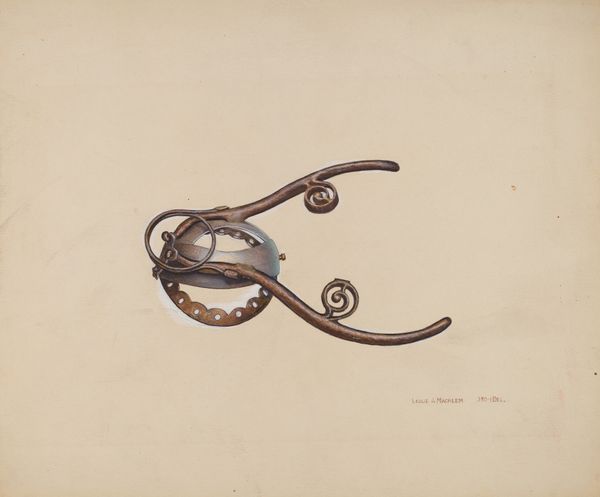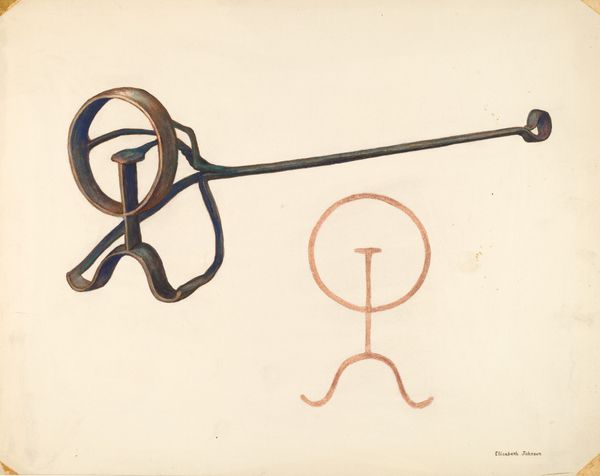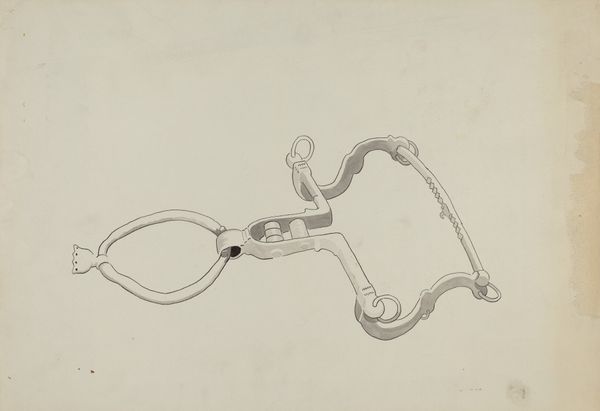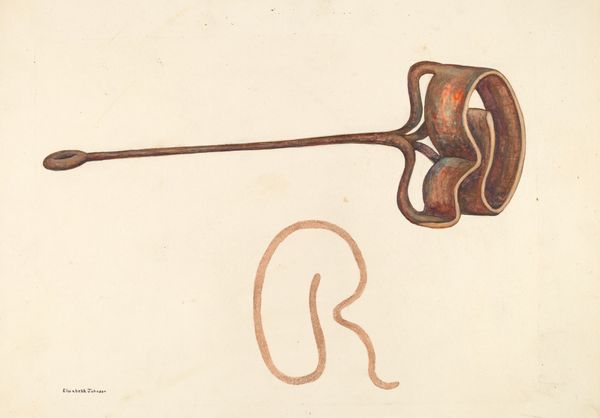
drawing, watercolor
#
drawing
#
aged paper
#
toned paper
#
personal sketchbook
#
watercolor
#
watercolour illustration
#
watercolor
#
realism
Dimensions: overall: 30.5 x 39 cm (12 x 15 3/8 in.) Original IAD Object: 34" long
Copyright: National Gallery of Art: CC0 1.0
Curator: Looking at Elizabeth Johnson’s “Branding Iron,” created around 1942, rendered in watercolor and drawing media, one can immediately sense a potent, if unsettling, stillness. Editor: Unsettling is the right word. It's stark, almost clinical. There’s a weightiness, even in this relatively small watercolor illustration, that hints at much larger, and darker themes than what we see represented. What do we know about the historical context here? Curator: The piece emerges from a period of intense social and political transformation in the United States and abroad. Johnson's work provides a lens into the iconography of power, both literally through this object—a tool for marking ownership—but also symbolically. Editor: How so? Curator: The branding iron becomes a focal point for broader questions about control, identity, and erasure. Its depiction in delicate watercolor contrasts violently with its intended use: the act of permanently marking animals as property, or metaphorically, individuals or communities as 'other'. We have to confront its brutal reality, a system deeply entangled with race and class in the American West. Editor: I’m struck by the formal arrangement. The isolated depiction, along with a rendering of a cattle brand on what seems to be aged or toned paper, is quite considered. Curator: Yes, the artist positions the instrument of control in sharp focus, almost as a study. And, though simple in form, her close attention to details like its worn texture and aged patina brings out the weight of its history. It quietly prompts questions regarding complicity. Are we simply observing or are we implicated in its history through this depiction? Editor: This prompts us to confront not just the branding iron as an object, but the social structures that gave it meaning and force. Considering its presence within a personal sketchbook, it poses really difficult questions. Why choose this subject matter for what's effectively an artistic journal? Curator: Absolutely, the selection speaks volumes. The sketch serves as both documentation and invitation for discourse concerning art’s capacity to reflect historical realities while simultaneously implicating current social narratives, whether regarding power, ownership or personhood. Editor: Johnson’s rendering effectively reminds us of how ordinary objects can bear witness to extraordinary, and often painful, histories. Curator: Precisely, a challenging work to reflect on long after viewing.
Comments
No comments
Be the first to comment and join the conversation on the ultimate creative platform.

